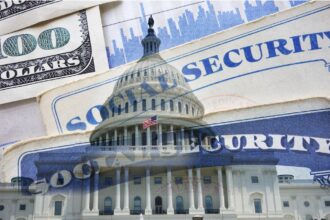Borrowers are slated to resume student loan payments in a few months and if they need help, it may be harder to get someone on the phone than in the recent past.
In documents filed with the Securities and Exchange Commission, Nelnet
NNI,
a publicly traded company that owns two major student loan servicers, detailed changes to its contract with the Department of Education starting April 1, including cutting the minimum number of hours its customer service center is required to be open each week.
The company also said it laid off 550 staff. The cuts come after the Department of Education slashed the amount of money it’s paying the company per borrower account by 19 cents, Nelnet said.
Servicers are borrowers’ first point of contact when repaying their student loans. The Department of Education hires the companies to collect payments, help borrowers access benefits of the student loan program, including enrolling in affordable repayment programs and manage the other logistics of paying student loan bills.
Over the past several years borrowers have struggled to get the right or enough information from servicers to keep their loan payments manageable. But the organizations are expected to receive a deluge of calls when student loan payments resume that far exceeds call volume during any previous period. The Biden Administration has said the coronavirus-era freeze on student loan payments, interest and collections will end 60 days after litigation over its debt forgiveness program is resolved or 60 days after June 30, 2023, whichever comes first.
The cuts to staff and hours will likely mean “longer wait times, fewer folks on the phone to provide service,” to borrowers during this period, said Sarah Sattelmeyer, the project director for education, opportunity and mobility in the Higher Education Initiative at New America, a think tank.
No Saturday hours and fewer evening hours
As part of the change to the contract, the Department is reducing the minimum number of customer service hours Nelnet-owned servicers, which includes Nelnet and Great Lakes, is required to provide. Previously, Nelnet was required to have its contact centers open from 8 a.m. to 11 p.m. EST on Mondays, 8 a.m. to 8 p.m. Tuesdays through Friday, and 10 am to 2 p.m. on Saturdays. Now, the company isn’t required to have its contact centers open on Saturdays. In addition, it’s required to be open for two fewer hours in the evenings on Mondays, Thursdays and Fridays.
Because Nelnet is a publicly traded company, it was required to disclose the contract changes and the Department of Education’s decision to transfer 1 million student loan accounts to another servicer to investors and the Securities and Exchange Commission. MarketWatch couldn’t confirm whether the other major student loan servicers were subject to similar contract changes; representatives from the organizations declined to comment or didn’t respond to questions about their servicing contracts. But Scott Buchanan, the executive director of the Student Loan Servicing Alliance, a servicer trade group, described the cuts to customer service as “across the board.”
In addition to shepherding tens of millions of borrowers back into student loan repayment in the next several months, servicers will also be implementing several significant changes to the student loan system. The Biden administration is in the midst of launching multiple programs aimed at making it easier for borrowers to repay their student loans and access forgiveness already available to them under the law. Any cuts to servicers’ capacity could make it more difficult for these programs to become a reality.
The combination of implementing major student loan changes and broadly returning to loan repayments, while simultaneously cutting back on customer service hours, could make the end of the payment freeze a “train wreck,” if it takes place by the end of the summer as planned, said Persis Yu, deputy director of the Student Borrower Protection Center, an advocacy group.
“We should be ramping up customer service hours if we want to turn on repayment, not ramping them down,” she said. “This is more evidence that we are headed into a disaster.”
Yu and other advocates have said the Department of Education should launch promised initiatives successfully, including broad-based debt cancellation, before resuming repayment. That’s in part because those programs would help clear the government’s books of loans that may be difficult to collect, freeing up customer service capacity for other accounts.
A larger share of customers allowed to hang up
In addition to the changes to customer service hours, the Department’s contract modification with Nelnet also allows the company to have a higher abandon rate — or the share of calls where a customer hangs up before getting help — and stay in compliance with its contract. Previously, Nelnet’s acceptable abandonment rate was 4%, now it’s 8%.
Student loan servicers and other companies with call centers use modeling to predict when they may have higher call volume and staff appropriately to ensure a reasonable abandon rate. The change in acceptable abandon rate indicates that the Department is “aware that the cuts are going to make it harder to staff to that level,” Buchanan, of the servicer trade group, said.
Between July 1, 2023 and December 31, 2023, the Department will be also more lenient in how it considers the abandon rate when evaluating the company’s performance, the contract change document says.
That change is an “acknowledgment that on a go-forward basis they know and understand that this cut — even in normal times — would make it challenging to achieve the prior abandon rate, but during resumption we just don’t have a sense of what the volatility is going to be like,” Buchanan said. It also recognizes that “for some period of time during resumption no one is going to be able to achieve those rates, even if you set them, because the sheer volume of contact is going to be incredibly high,” he added.
The cuts come after Congress rejected the Department of Education’s request for increased funding for the Office of Federal Student Aid, which oversees the government’s student loan portfolio, during last year’s budget cycle. Congressional Republicans touted the decision to level-fund the agency as one that would ensure the government provided “no new funding for the implementation of the Biden administration’s student-loan forgiveness plan.”
“Servicing is a big part of FSA’s budget and as they are having to make trade offs, this is likely part of those trade offs,” Sattelmeyer said. “Without additional funding for FSA, without additional funding for servicing, this is a huge problem and will continue to be one.”
Yu said she sees that decision as one example of “policymakers playing politics with student loan borrowers.” Last month, Congressional Republicans also introduced a resolution that, if passed, would strike down the Biden Administration’s debt forgiveness plan and restart payments, which Yu puts in a similar category.
“The financial solvency of student loan borrowers is not at the forefront of this political debate right now,” Yu said. “Unfortunately student loan borrowers are going to pay the price.”
The Department said policymakers’ decision to level-fund FSA has made it more difficult to invest in improvements to student loan servicing and other priorities like launching a new, streamlined application for federal student aid. The agency will continue working with Congress to fully fund President Joe Biden’s budget request for fiscal year 2024, a Department spokesperson wrote in an email. That includes an uptick of $620 million for the Office of Federal Student Aid
“The Department is fully committed to supporting student loan borrowers as they successfully navigate returning to repayment later this year, and the Department will keep doing everything in its power to better serve students and borrowers,” the spokesperson wrote. “Restarting repayment requires significant resources to avoid unnecessary harm to borrowers.”
Most vulnerable borrowers likely hurt the most by cuts
Both advocates and servicers agree that the funding and customer service capacity cuts will likely pose challenges for borrowers. During a normal period, the overall servicing customer service staff is about 6,000 to 7,000, according to Buchanan. Buchanan described the 550 employees Nelnet said it laid off, as a “marginal reduction.”
Still, “it’s going to be meaningful, hence why Nelnet had to make the announcement because of material impact,” Buchanan said, referencing the notion that publicly traded companies are required by the SEC to disclose information to investors that could have a major impact on their business.
As borrowers return to paying their student loan bills, many will likely need help enrolling in repayment programs or even completing more basic tasks like ensuring their contact information is up to date, advocates said.
“People haven’t been making payments for over three years,” Yu said. “There’s going to need to be a lot of handholding to make sure that borrowers are able to access all of the services and programs that they need.”
The borrowers most likely to be impacted by cuts to customer service hours and personnel are those that are already the most vulnerable, advocates say. Low-income borrowers who need access to affordable repayment programs are more likely to work hourly jobs where they don’t get paid if they take time out of their day to call their servicer and manage their student loan payments.
Borrowers juggling multiple gigs, child care and other responsibilities may also struggle to find the time to sit on the phone to ensure they enter repayment on an affordable plan. Eliminating Saturday customer service hours and curtailing evening hours on many days during the week will likely make it even more difficult for these borrowers to find the time to talk to their student loan servicers if they need help.
When borrowers have returned to repayment following previous, smaller payment pauses, delinquency and default rates spiked. That’s in part because borrowers didn’t receive enough outreach following the end of these shorter payment freezes to ensure they were prepared for payments to resume and had access to the resources available to them to make payments more manageable.The Biden Administration has argued in court that without implementing broad-based debt forgiveness before ending the payment freeze, the student loan system and borrowers will face a similar dynamic but on a much larger scale.
For “really low-income folks who have prepaid cell phones or are paying by the minute, these are very expensive phone calls to make,” Yu said. “These are one of the reasons why when repayment restarts we are more likely to see delinquency and default. It is extremely costly to borrowers both on the loans and in their human capacity to not have this information available.”
Read the full article here










